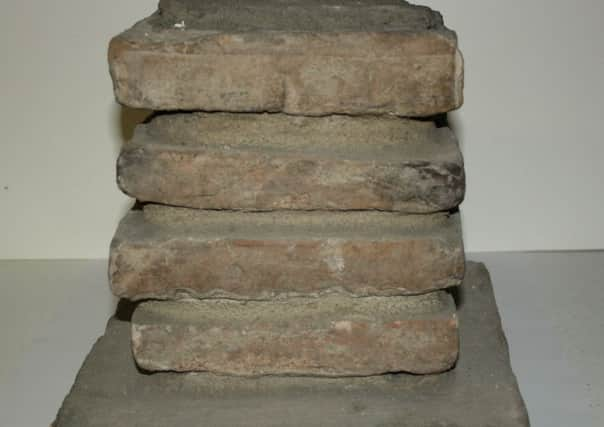Exhibit of the Week: Hypocaust pillar '“ Malton Musueum


The Greeks did have a system of under-floor heating, but the hypocaust, as known in Roman Britain, was invented by the Romans and was in use in Pompeii by at least the 1st century BC. Braziers, open fires contained in metal surrounds, continued in use, but very dry wood or, better still, charcoal, was needed to avoid poisoning from carbon monoxide.
Literally translated as ‘fire underneath’, hypocausts worked by creating a space under the floor where the hot air from a furnace could circulate and rise to heat the floor, but noxious fumes were contained and did not cause harm. Hollow tiles in the walls allowed the gases to escape up through the walls and out through a vent in the roof creating a system that was both cleaner and healthier than open fires.
Advertisement
Hide AdAdvertisement
Hide AdThe furnace was placed outside the building and needed regular attention, and a steady supply of wood, in order to maintain a comfortable temperature – the rooms nearer the furnace would be the hottest, an important factor in the layout of Roman baths where the bather progressed through pools of different temperatures.
A space, about three feet deep, was dug out under the room to be heated. A series of pillars (pilae), usually made, as in this case, of square tiles cemented together and sitting on a slightly larger base and, according to the famous Roman engineer Vitruvius, standing about 2 feet high, were placed at intervals with spaces between. Although pilae are usually square, round tiles might be used and hollow pilae, made by re-using other forms of tiles from roofs and walls, are also known, as are occasional stone ones, including one from Langton villa. The floor over the pillars was made up of larger tiles over which concrete was laid, and they might be finished with another layer of tiles or even mosaic in the smarter rooms.
This pillar and tiles from others came into the museum collections with other finds from excavations at Langton villa in the 1930s. Two hypocausts were found and archive photos, also held by the museum, show the extent of them. Evidence of this type of under-floor heating has been found in buildings in the civilian settlement around the fort at Malton, one of them under a fine mosaic floor.